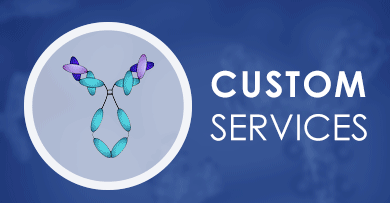+ Filter
 Loading...
Loading...

Streptococcus agalactiae
 Loading...
Loading...Anti-Streptococcus agalactiae Products
- Recombinant Anti-S. agalactiae Antibody (424.1) (MRO-358-MZ)
-
- Type: Mouse antibody
- Application: ELISA
- Recombinant Anti-S. agalactiae Antibody (504.5) (MRO-359-MZ)
-
- Type: Mouse antibody
- Application: ELISA
- Recombinant Anti-S. agalactiae Antibody (BDI560) (MRO-360-MZ)
-
- Type: Mouse antibody
- Application: ELISA
- Recombinant Anti-S. agalactiae Antibody (224/46) (MRO-475-MZ)
-
- Type: Mouse antibody
- Application: ELISA
-
- Type: Mouse antibody
- Application: ELISA
-
- Type: Mouse antibody
- Application: ELISA
-
- Species Reactivity: Bacteria
- Type: Mouse antibody
- Application: ELISA, IF
- Mouse Anti-S. agalactiae Antibody, mRNA (MRO-606-MZ-mRNA) (MRO-606-MZ-mRNA)
-
- Species Reactivity: Streptococcus agalactiae
- Mouse Anti-S. agalactiae Antibody, mRNA (MRO-607-MZ-mRNA) (MRO-607-MZ-mRNA)
-
- Species Reactivity: Streptococcus agalactiae
View More Products
Can't find the products you're looking for? Try to filter in the left sidebar.Filter By Tag
More Infomation
Our customer service representatives are available 24 hours a day, from Monday to Sunday. Contact Us
For Research Use Only. Not For Clinical Use.
Background
Streptococcus agalactiae (also known as group B streptococcus or GBS) is a gram-positive coccus (round bacterium) with a tendency to form chains. It is a beta- hemolytic, catalase-negative, and facultative anaerobe. In general, GBS is a harmless commensal bacterium being part of the human microbiota colonizing the gastrointestinal and genitourinary tract of up to 30% of healthy human adults (asymptomatic carriers). Nevertheless, GBS can cause severe invasive infections. Streptococcus agalactiae is the species designation for streptococci belonging to group B of the Lancefield classification. GBS is surrounded by a bacterial capsule composed of polysaccharides (exopolysacharide). As other virulent bacteria, GBS harbors an important number of virulence factors (virulence factors are molecules produced by bacteria that boosts their capacity to infect and damage human tissues), the most important being the capsular polysaccharide (rich in sialic acid ) and a pore-forming toxin, β-hemolysin. Today it is considered that GBS pigment and hemolysin are identical or closely related molecules.


